You should provide links to devices mentioned.
ECGs are industry standard waveforms of heart activity that are based on industry standard means of acquisition. If you use non standard means you will get a non standard waveform in a given situation.
Whether this is useful depends on what you are trying to do.
Whether this can be optimised depends on what you consider is optimum.
Can it produce an entirely standard result? - No.
ie it depends what you are trying to do.
If you are trying to produce an ECG waveform that bears a reasonable resemblance to the ones used throughout the medical world then you should use multiple leads and connect them 'correctly'.
If you are trying to produce an interesting waveform that has an unknown relationship to normal ECGs and which is of unknown meaning and usefulness for normal purposes then any connection that pleases you is fine.
You say "not producing optimum results" - it will not produce NORMAL results, of course. Please explain what you consider is optimum and what you actually do get.
Hand to hand only, 2 electrode ECGs:
The following relate to 2-hand only ECG systems.
To better determine their relevance to the OP's kitset and IC the OP would ideally provide links as requested.
This 2014 Cornell university student assignment sheet ECE 5030 - ECG recording from the hands. provides a wide variety of references and comments on implementation of a 2-hands ECG system.
This 1985 IEEE pape
A Real-Time QRS Detection Algorithm
appears to be at the heart of their system
Einthoven's triangle introduction and practical lab stuff here
Excellent Eithoven's Triangle simulator to assist visualisation - should be useful in this context for others more versed in EE than ECGs.
A simple device to illustrate the Einthoven triangle
Should be useful:
Video ET intro
Comparison of Heart Vectors Calculated with
Different Systems of Leads
About 1950 vintage. Looks good.
- Einthoven's equations for the heart vector are based on the assumption that voltages measured
across the trunk horizontally (or vertically) are proportional to the horizontal (or vertical) component
of the dipole moment of the heart's electromotive forces. One necessary consequence of
this assumption is that all the horizontal (or vertical) voltages be similar, and that heart vectors
calculated with different sets of these voltages and appropriate formulas be the same. An experimental
test of this predicted result is described in this paper.
While this is about attempting to detect, identify and correct for the effects of lead reversals post-priori it may be useful due to its detailed examinations of what you see and why and what can be done about it.
ECG limb lead reversals
It is highly likely that this image based search output will more easily lead to useful results than text based results.
May be useful:
Development of a 2 lead ECG program 1982 (2 lead = 3 electrode?)
BIOPAC Application Note 109 1-, 3-, 6- and 12-Lead ECG
Not as good as it sounds, alas. Uses sequential 1 lead BUT has some insights How to use 1-lead ECG recorders to obtain 12-lead resting ECGs and exercise ("stress") ECGs
Unveiling the Biometric Potential of Finger-Based ECG Signals 2011
EKG book
A comparison of 2-lead, 6-lead, and 12-lead ECGs in patients with changing edematous states: implications for the employment of quantitative electrocardiography in research and clinical applications.
Other:
Tutorial 12 lead ECG Primer: The Leads of a 12-lead ECG
standard 12 lead set
ECG basics](http://en.ecgpedia.org/index.php?title=Basics)
Wikipedia basic ECG
and
Interesting:
iPhones and Eagles
And other apps
 I wish to use only 2 leads; how do I ground the third lead RLD? I'm collecting the signal from the hands. The datasheet only gives application for cardiac monitor wherein the electrodes are placed near the heart. Can someone give me an idea? My first option was to connect two \$10\:\textrm{M}\Omega\$ resistors from RA (-IN) and LA (+IN) and then from the other end connect it to RLD. However, this is not producing optimum results.
I wish to use only 2 leads; how do I ground the third lead RLD? I'm collecting the signal from the hands. The datasheet only gives application for cardiac monitor wherein the electrodes are placed near the heart. Can someone give me an idea? My first option was to connect two \$10\:\textrm{M}\Omega\$ resistors from RA (-IN) and LA (+IN) and then from the other end connect it to RLD. However, this is not producing optimum results.